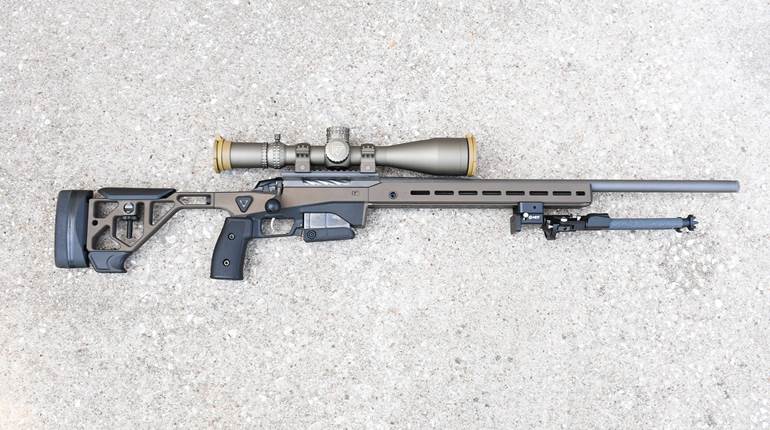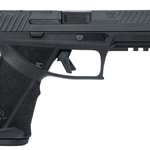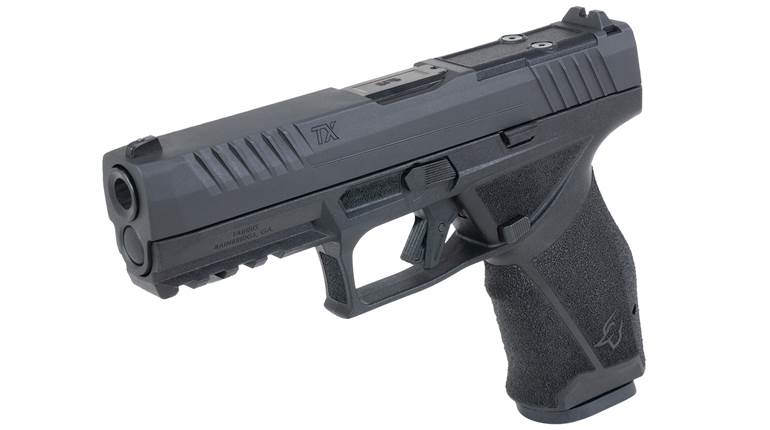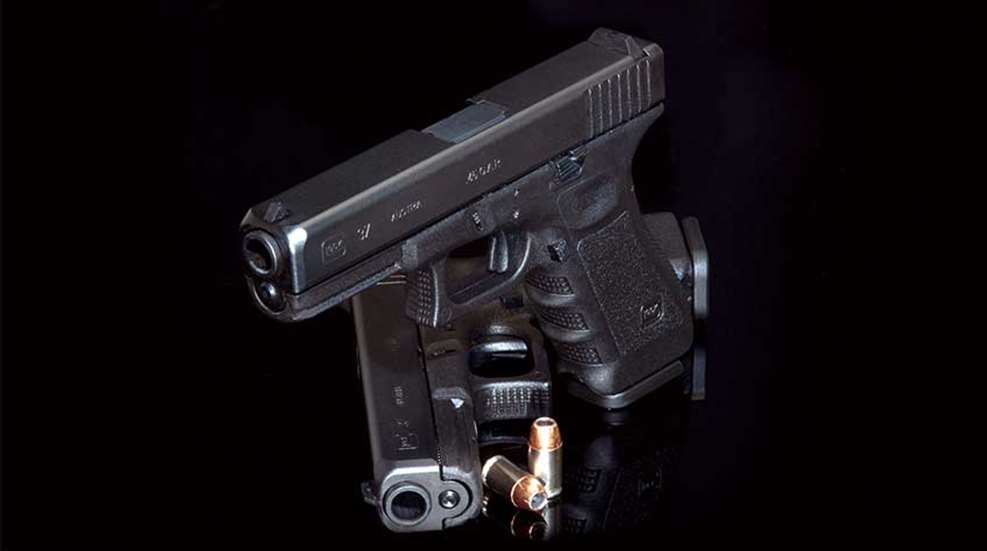
This article, "The First-Generation GAP," appeared originally in the June 2004 issue of American Rifleman. To subscribe to the magazine, visit the NRA membership page here and select American Rifleman as your member magazine.
The Glock 37 is the result of an ambitious project: To build a .45-cal. pistol dimensionally identical to an existing 9 mm Luger-cal. pistol. Something similar had, of course, been achieved before in the industry with .40 S&W handguns. Those .40-cal. guns are built on the same frames and with the same slides as 9 mm Luger-cal. pistols. Given the tremendous acceptance and success of .40 S&W guns, it seemed likely that any company that could produce a 9 mm-size pistol in the “magical” (to consumers, anyway) .45 caliber would have a hot ticket on its hands.
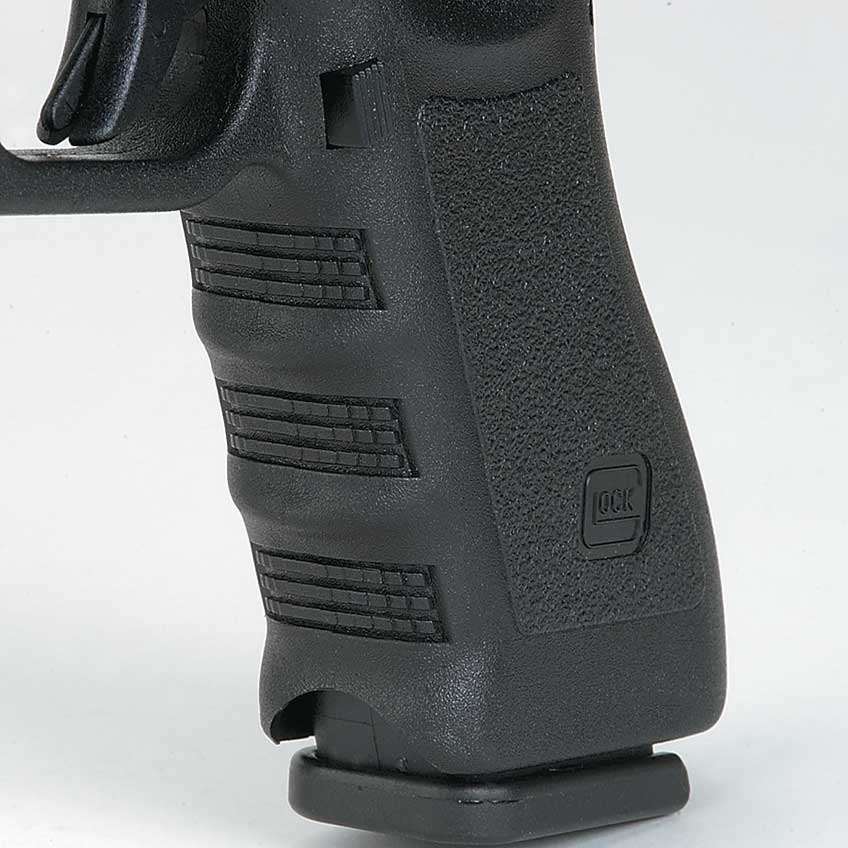
The .45 ACP cartridge was not considered as the actual round due to its overall length. It was, however, regarded as the performance ideal and would be the standard a new cartridge would have to match. Thanks to modern advances in propellants and careful case design, the .45 GAP cartridge, though shorter than the .45 ACP, appears to have met the design criteria of equaling .45 ACP performance in energy and accuracy.
However, Glock was not able to achieve its goal of a fully functional .45-cal. pistol that was dimensionally identical to its full-size 9 mm Luger-cal. Model 17. The problem was the slide. Spring tension changes over time. Loadings—and even individual cartridges within a given loading—vary. In comparison, slide weight is a constant and it was necessary to increase the slide’s mass if the Model 37 were to function reliably regardless of variables elsewhere in the equation. As a result, although it has the frame of a Model 17, the Model 37 has the slide of a Glock Model 21 .45 ACP-cal. pistol, a much larger gun.
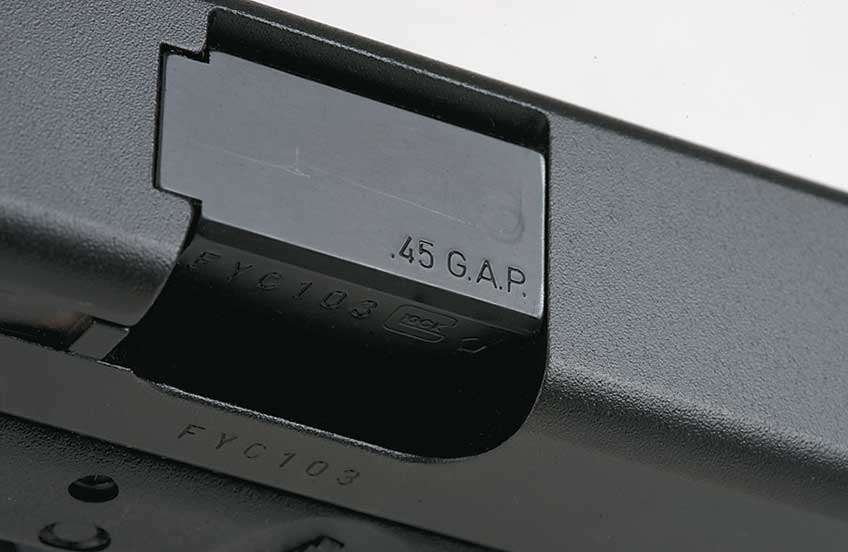
The result is a much bigger, heavier firearm than originally intended. Oh, it’s smaller in the hand than a Model 21, for those small-handed shooters who desire a double-stack .45-cal. Glock. However, small-handed shooters already have the option of the compact, single-stack Model 36 in .45 ACP. Additionally, the large slide robs the Model 37 of one of its biggest anticipated advantages—compatibility with Model 17 (or .40 S&W-cal. Model 22) holsters, though it may fit some Model 21 leather or nylon rigs.
On the other hand, if one examines the Model 37 in a vacuum without consideration for the original design intentions, it is an excellent pistol, indeed. It’s got the clean, functional, no-nonsense appearance shared by all current generation Glocks, including an accessory rail on the dustcover and finger grooves on the frontstrap. It’s further enhanced by beveled edges at the front of the slide to ease reholstering. All controls and the sights are standard Glock items except the extended slide release, which is standard only on the Model 37 and models 34 and 35 match guns.
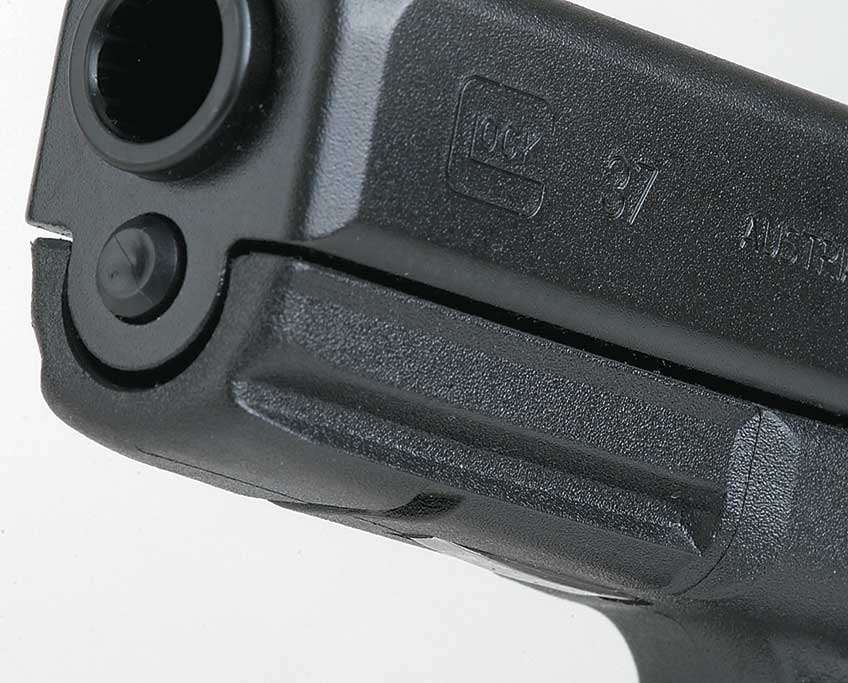
At the range, this Glock feels better than many others as you are holding a Model 17-size grip frame, but feeling the heft of a larger pistol. You can really tell the difference at the firing line, and the weight is well-balanced and reassuring. We didn’t know what to expect as far as felt recoil, but were pleasantly surprised. You’ll know it when it goes off, but the .45 GAP fired from the Model 37 seems to kick less than Glock’s .40 S&W-cal. pistols. One particular quality we noted was that this gun gets back on target fast. Due to the heavy slide and full-length barrel, muzzle rise is minimal and control is excellent. Handling is, however, a bit sluggish.
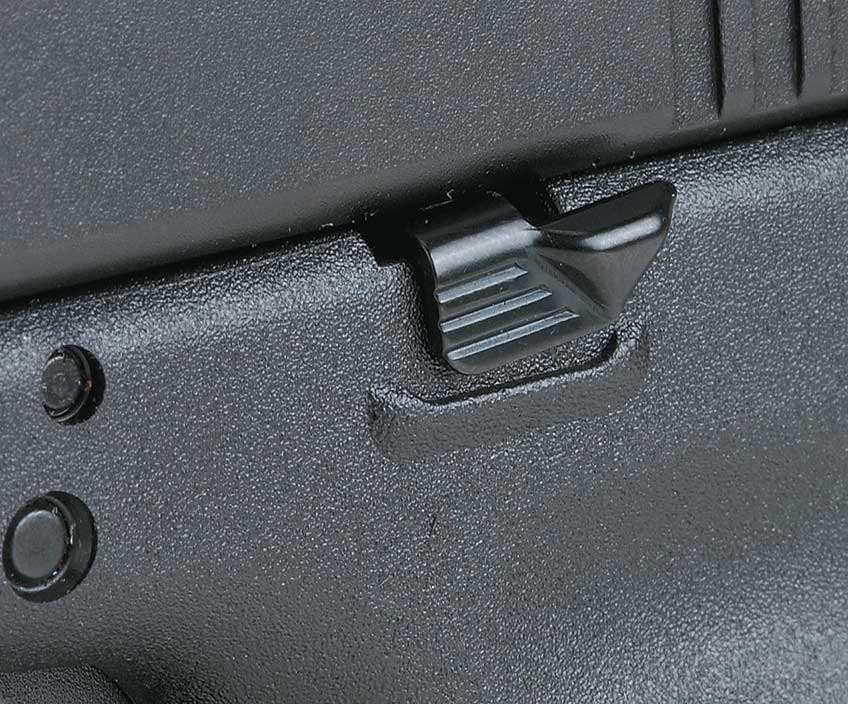
The grip frame surface is still rather slippery, but as good as one can currently expect in a polymer gun with integral polymer grip panels. The slipperiness will gradually break down your grip by the end of a full magazine shot rapid fire. The best solution, short of professionally performed frame modification by Custom Arms Company or Robar, is the application of textured tape appliqués or installation of a rubber grip sleeve.

Reliability was, well, Glock-like. There were no failures to feed, fire or extract despite mixing loads in the same magazine, holding the gun at strange angles, using a poor hold, etc. Accuracy was surprisingly good. There were the typical first-shot flyers but, on the whole, groups were tight and consistent for a service-type pistol.
The one real problem we had was loading the magazines. The magazine springs are quite stiff and forcing the fat cartridges against them is an ordeal even though Glock provides a loader. It takes skill born of repetition and a stout thumb to get through an extended shooting session.
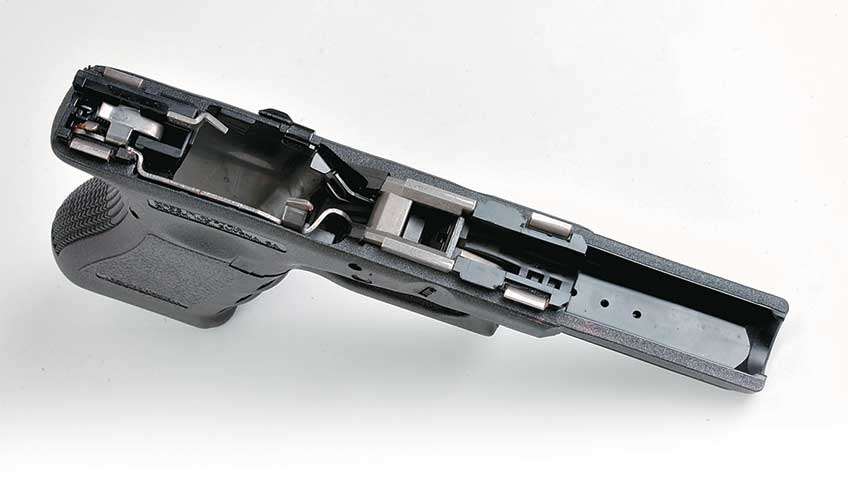
Where the Model 37 fits within the Glock lineup is hard to say. It wasn’t what the company had originally envisioned, but is a good gun, nonetheless. There is also the intrigue and appeal of the .45 GAP round; a true performer and not merely a novelty. For those who like the grip size of the Model 17 but want .45-cal. power, or those for whom the Model 21 grip frame is just a bit too large, the Model 37 may be the answer.
As such, it would seem to offer a fine alternative for small-handed law enforcement personnel looking for a duty sidearm. Also, it should make a splendid home-defense firearm that can be handled by either husband or wife. No, the Model 37 was not what Glock intended, but a good gun is a good gun and will always find its place.














